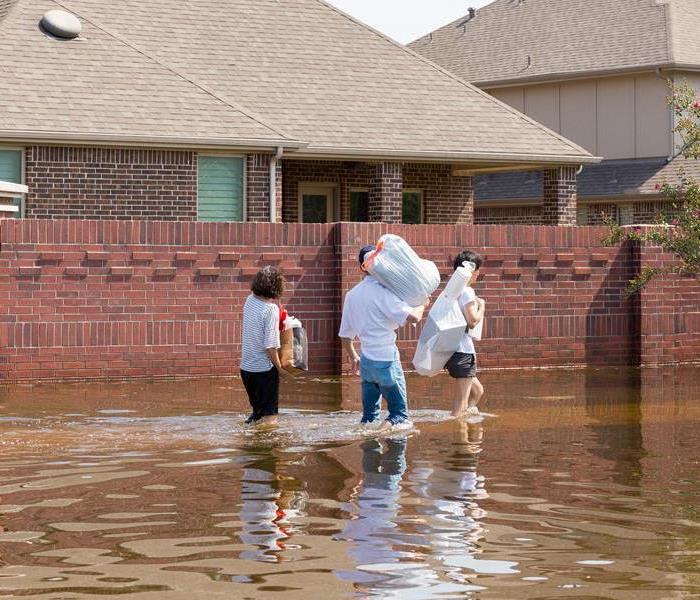Battling the Elements: Weathering the Storm with Resilience and Resolve
6/29/2023 (Permalink)
One of the distressing consequences of flooding is the lingering odor it leaves behind. The combination of moisture, organic matter, and stagnant water can create a musty and unpleasant smell that permeates your home. To restore a fresh and clean environment after a flood, it's important to address odor removal effectively. In this blog, we will explore proven methods and techniques to eliminate odors caused by flooding and reclaim a pleasant living space.
Safety First
Before starting any odor removal process, prioritize safety by wearing protective gear such as gloves, goggles, and a mask to avoid exposure to potentially harmful substances or contaminants present in floodwater.
Remove Water and Moisture
Extract Standing Water. Use pumps, wet/dry vacuums, or professional water removal services to remove standing water from your home promptly.
Dry Out the Area. Utilize fans, dehumidifiers, and open windows to facilitate air circulation and promote faster drying. Aim for relative humidity levels below 50% to inhibit the growth of mold and mildew, which can contribute to unpleasant odors.
Clean and Disinfect
Clean Flooded Areas: Thoroughly clean all affected surfaces, including walls, floors, and furniture, using a mild detergent or specialized cleaning solutions. Pay extra attention to areas with visible mold or mildew growth.
Disinfect Surfaces: Use a disinfectant solution recommended for flood cleanup to kill bacteria and remove any remaining contaminants that contribute to foul odors.
Treat and Remove Mold and Mildew
Identify Mold and Mildew: Inspect your home for signs of mold or mildew growth, which can produce strong odors. If present, engage in mold remediation efforts following proper guidelines or seek professional assistance.
Remove Moldy Materials: Discard porous materials that have been extensively affected by mold or mildew, such as carpeting, upholstered furniture, and insulation. Replace them with new, uncontaminated materials.
Odor Elimination Techniques
- Vinegar Solution: Mix equal parts of white vinegar and water in a spray bottle. Spritz the solution on affected surfaces and let it air dry. Vinegar is known for its natural deodorizing properties.
- Baking Soda: Place bowls of baking soda in different areas of your home to absorb and neutralize unpleasant odors. Leave them for several days before discarding and replacing with fresh ones.
- Activated Charcoal: Utilize activated charcoal or charcoal briquettes in mesh bags or containers placed strategically around the house. Charcoal absorbs odors effectively.
- Odor Neutralizers: Consider using commercial odor neutralizers or deodorizing products specifically designed for flood-related odors. Follow the instructions provided by the manufacturer for best results.
Ventilation and Fresh Air
Maximize ventilation by opening windows and using fans to circulate fresh air throughout your home. This helps remove trapped odors and promotes faster drying.
Professional Assistance
If your efforts to remove the odor are unsuccessful or if you encounter extensive mold growth, consider seeking professional help from experienced restoration specialists who can provide advanced odor removal techniques and ensure thorough restoration.
Effective odor removal from flooding requires a systematic approach that includes removing water and moisture, cleaning and disinfecting, addressing mold and mildew, utilizing odor elimination techniques, and promoting ventilation. By following these steps and exercising caution, you can eliminate unpleasant odors and restore a fresh, clean, and healthy living environment in your home.





 24/7 Emergency Service
24/7 Emergency Service
